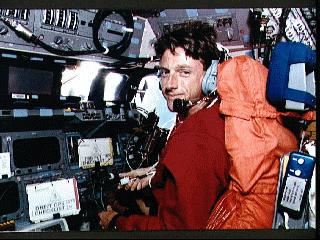

First, let me say Amateur Radio is a lot of fun! Amateur Radio (Ham Radio) is legally defined by the Federal Communications Commission (FCC) as a Service. Amateur Radio provides a service to the community by assisting during times of national and local emergencies on a noncommercial voluntary basis. In the North Country this service is provided, in part, by the North Country Amateur Radio Emergency Service (ARES). Amateur Radio also provides the community with a pool of trained radio operators, technicians and electronic experts. Amateur Radio fosters international goodwill. Besides the above, Radio Amateurs have a great time chatting with other Hams both near and far, building their own radio equipment and antennas and experimenting. The government allows hams to do the fun stuff because hams are there when the community needs them. Without community service there would be no Amateur Radio.
 Amateur Radio
is many things to many types of people. It can be as simple as chatting to a friend across
town on a store bought handheld radio or as complicated as trying to bounce your radio
signals off the moon to communicate with a station in Tunisia. Ham Radio is what you make
it. There are so many interests in Ham Radio that I can't believe anyone has the time to
try them all. For the computer enthusiast, there are the digital modes. These include
packet radio (similar to internet or BBS operation), RTTY (teletype like in the newspaper
offices) and many new improved modes of communication. There are Radio Amateur Satellites for communication.
These are put up by hams in the United States, Russia and other countries for the benefit
of the amateur community. Some people mix the digital modes with the satellites to create
networks for passing messages around the world.
Amateur Radio
is many things to many types of people. It can be as simple as chatting to a friend across
town on a store bought handheld radio or as complicated as trying to bounce your radio
signals off the moon to communicate with a station in Tunisia. Ham Radio is what you make
it. There are so many interests in Ham Radio that I can't believe anyone has the time to
try them all. For the computer enthusiast, there are the digital modes. These include
packet radio (similar to internet or BBS operation), RTTY (teletype like in the newspaper
offices) and many new improved modes of communication. There are Radio Amateur Satellites for communication.
These are put up by hams in the United States, Russia and other countries for the benefit
of the amateur community. Some people mix the digital modes with the satellites to create
networks for passing messages around the world.
NASA has developed the "ARISS" mission. "ARISS" stands for "Amateur Radio on the International Space Station". This project gives average hams the ability to talk with astronauts in space. The Russian "Mir" spacecraft had Amateur Radio aboard all the time and could be monitored and contacted.
There are others who just like to just talk (we call them "rag-chewers") and they don't care with whom they are talking . Then there are those called "DXers". Dxers try to talk to as many countries as they can. Some will not even talk to you unless you are in a country they have never talked with before. Some operators try to talk to as many US counties as they can contact. Hams really do bounce signals off the moon to make contacts with areas usually unreachable by normal means.
Some operators only use telephone type communications, others only use the morse code (we call it CW). Some even have their own Amateur Radio TV stations. Some buy all their equipment while others build all their own equipment. Some have expensive equipment and others have stations which they have put together for practically nothing. So as you can see there are many types of hams with many types of interests. I have not touched them all. If it sounds interesting to you come and join in the fun !